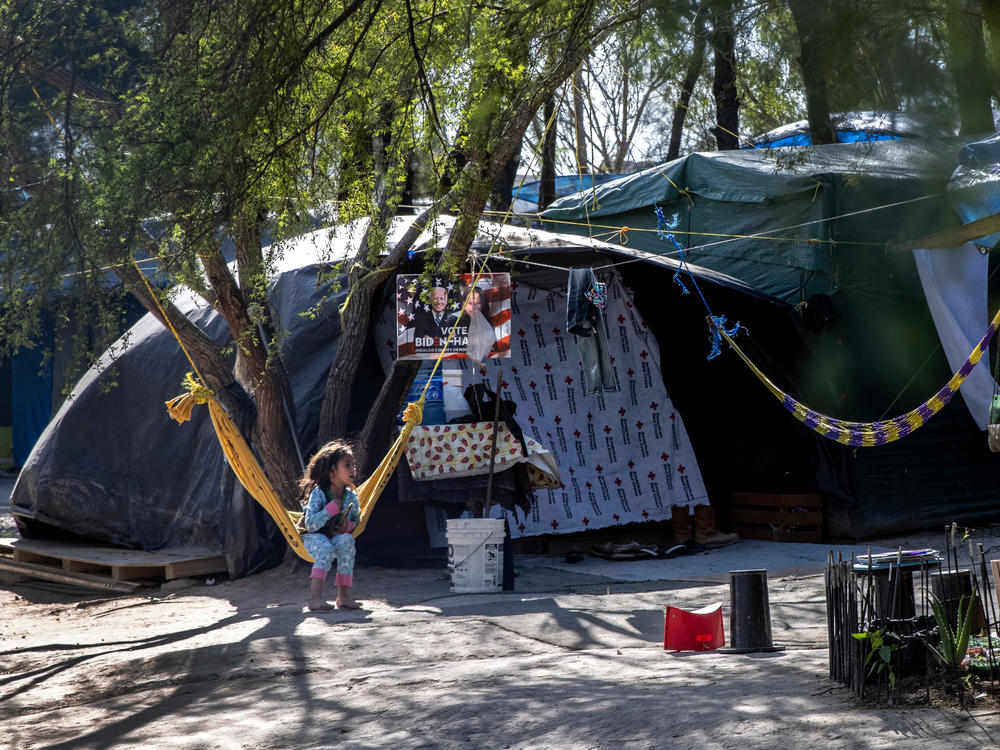Section Branding
Header Content
Biden Team Unveils New Asylum System To Replace Trump's 'Remain In Mexico'
Primary Content
Updated at 11:19 a.m. ET
The Biden administration will begin phasing in a new asylum process on Feb. 19 for the backlog of people seeking asylum on the southern U.S. border, but Homeland Security Secretary Alejandro Mayorkas told NPR that migrants must avoid traveling to the U.S. border while the new system gets up and running.
Mayorkas said the new administration wanted to roll out its program quickly "because we are very sensitive to the level of desperation that people are suffering," but he acknowledged that it will be a "very significant challenge" to encourage migrants to wait for a chance to register, to avert a new surge of people to the southern U.S. border where many asylum-seekers have been living in squalid camps in a state of limbo for court dates.
"It's a very, very important cautionary note that they should not travel to the border. That will only increase the pressure on the humanitarian effort to provide for them carefully and safely," Mayorkas said in an interview with Morning Edition's Rachel Martin.
The Department of Homeland Security plans to start allowing in a trickle of asylum-seekers — about 300 people per day — from among an estimated 25,000 people with "active cases" in the now-defunct Migrant Protection Protocols program.
Former President Donald Trump called the program "Remain in Mexico" because it forced migrants from Central American countries to await asylum hearings outside the United States. Biden has called that policy "inhumane," and ending the program was one of Biden's first actions when he took office, part of a sweeping rollback of Trump's measures aimed at curbing immigration. Biden promised a more "humane" system.
Senior officials who briefed reporters on a conference call on condition of anonymity said they began work on the new asylum process during the transition, coordinating with international organizations and the Mexican government. Many details have not been spelled out, in part for fear of inundating ports of entry and international organizations with a flood of inquiries from desperate asylum-seekers.
Mayorkas said the administration has been rebuilding the asylum system "really from scratch."
"I cannot overstate the fact that the prior administration completely dismantled the program, and it takes time to rebuild it in a way that addresses the humanitarian needs of the individuals who seek to access it," he told NPR.
Migrants who believe they are eligible will first register with NGOs, nongovernmental organizations that will identify those who are most vulnerable and stuck in limbo the longest. The Department of Homeland Security is building "electronic portals" for migrants to be able to register and check their status.
Migrants will find out the details of the new system through social networks. "We'll be doing a huge amount of media. We'll be working with our international organization partners who have excellent social media networks that reach migrant communities to make sure that people understand who will be eligible for this program and who will not," a senior U.S. official told reporters.
After initial screening by the NGOs — which are not yet being revealed — migrants will be given an appointment to go through a port of entry. They will first be tested for the coronavirus and will be equipped with masks.
The asylum-seekers will be enrolled in "alternative detention programs" after they cross the border to a final destination inside the country, where their asylum cases will eventually be heard, officials told reporters. No court proceedings will occur at the border.
"If people wait and they see how this works in an orderly, safe and efficient manner, that is the best ticket to greater success in the future," Mayorkas told NPR.
"If, in fact, they don't wait, we will see the detriments of that failure to wait, and that, regrettably, will be an important lesson with respect to what we have cautioned," he said.
Copyright 2021 NPR. To see more, visit https://www.npr.org.


